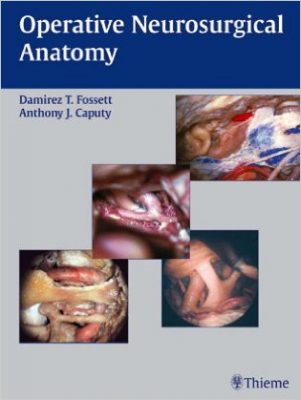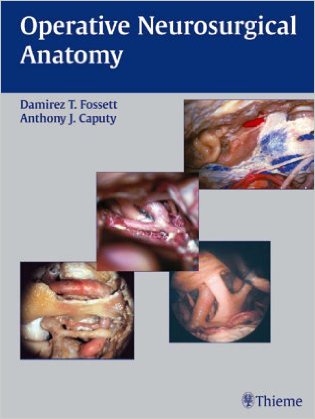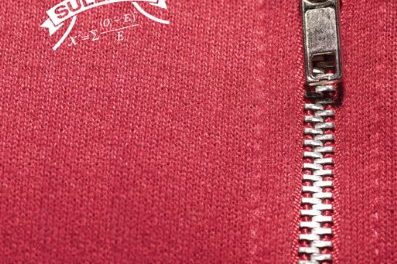 Editors: Damirez T. Fossett, MD; and Anthony J. Caputy, MD
Editors: Damirez T. Fossett, MD; and Anthony J. Caputy, MD
Publisher: Thieme – 209 pages
Book Review by: Nano Khilnani
A firm knowledge of surgical neuroanatomy is a must, but this knowledge must be not only three dimensional, it must be coupled with surgical skills capable of handling meticulous details, in order to competently do surgery in the central and peripheral nervous systems, writes Dr. Hugo V. Rizzoli in the Foreword to this book.
Another requirement for doing surgery successfully is sound preoperative planning with regard to choice of approach and position, Dr. Rizzoli points out.
This book has been developed with appropriate text and images to enable you to appreciate “the three-dimensional anatomy and structural neuroanatomic relationships while being visually oriented with the perspective of the operative approach,” in the words of Dr. Rizzoli.
It is for learning and use by practicing neurosurgeons and spine surgeons who want to refresh surgical techniques, by surgeons in training as an enhancement to their clinical experience, and by students in their study of relationships of structures in the central nervous system and the peripheral nervous system.
Fourteen people from the Department of Neurosurgery of George Washington University in Washington, D.C. – two professors, eight research fellows, a curator, a laboratory assistant, a medical student, and a regular student – contributed to this book by authoring the 43 chapters of this book, which are divided into four sections named below:
- Cranial Approaches
- Spinal Approaches
- Peripheral Nerve Approaches
- Neuroendoscopy
This book is unique. It is different from others on neuroanatomy in that in it, anatomic specimens are placed in different operative positions in order for practitioners and trainees to see their relative relationships and proximities to other structures.
In each of the sections named above, a number of surgical approaches are presented and discussed, with step-by-step instructions and alongside full-color photos. The book contains 20 cranial approaches, 10 spinal approaches, nine peripheral nerve approaches, and four approaches in neuroendoscopy.
In the chapters, different approaches to surgery are presented and discussed. The following information is provided, in order of presentation: indications for approach; positioning and skin incision; surgical technique; pitfalls, pearls, considerations.
Let’s take a look at chapter 27, Ventrolateral Approach to the Thoracic Spine. In the heading Indications for Approach at the beginning of this chapter, these are the three reasons given for surgery:
- Anterior thoracic spine neoplasms
- Anterior thoracic spine inflections
- Anterior thoracic cord compressions
The Surgical Technique is then presented, with various detailed surgical steps, alongside six images on three pages.
Just above the image in Figure 27-2 is this caption: After muscle transaction, the underlying rib can be visualized.
The first step in the Surgical Technique: After the skin incision, the latissmus dorsi and serratus anterior muscles are transected. A subperiosteal dissection is performed along the rib, and is resected from the posterior axillary line to costotransverse ligament. Beneath the rib lies the endothoracic fascia, to which is attached the parietal picura (Fig 27-3)
Further steps are provided to complete several surgical procedures, along with other images and captions.
This is a very useful, practical, hands-on book on neuroanatomy and neurosurgical techniques.
Editors:
Damirez T. Fossett, MD is Assistant Professor in the Department of Neurosurgery; Director of the Harvey Hammerman Microneurosurgical Lab at George Washington University in Washington, D.C.
Anthony J. Caputy, MD is Hugo V. Rizzoli Chairman of the Department of Neurosurgery at George Washington University in Washington, D.C.
Foreword:
Hugo V. Rizzoli is Professor Emeritus in the Department of Neurosurgery at George Washington University in Washington, D.C., and Diplomate of the American Board of Neurological Surgery.
Contributors:
Adjunct Professor Carlos Acevedo, MD
Assistant Professor and Research Fellow Ali Kurtsoy, MD
Curator James Agee (Department of Anatomy)
Laboratory Assistant Amal Nadal, M.Sci.
Student Matthew Ammerman
Medical Student Mark Grant
Research Fellows:
Emel Avci, MD
Amitabha Chanda, MD
Chandrasekhar Kalavakonda, MD
Humayun Khalid, MD
Yalcin Kocaogullar, MD
Fabio Roberti, MD
Sajjan Sarma, MD
Ernest Senz, MD







